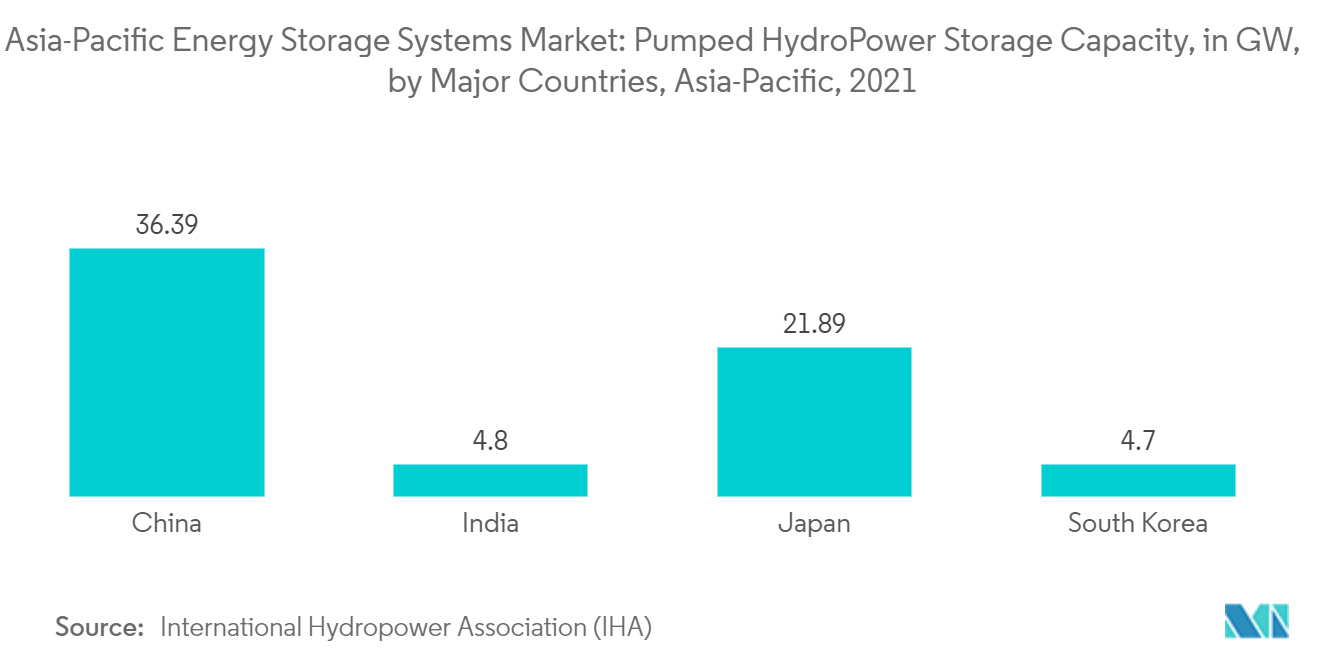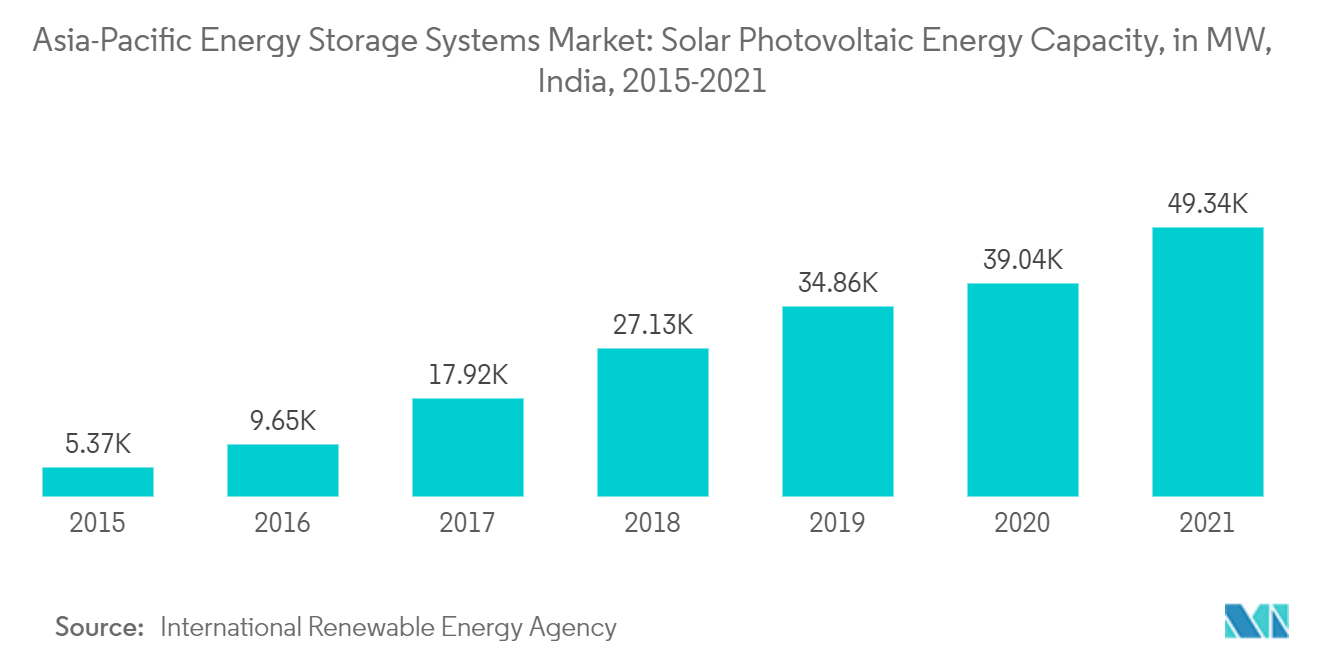Market Trends of Asia-Pacific Energy Storage Systems Industry
This section covers the major market trends shaping the APAC Energy Storage Systems Market according to our research experts:
Pumped-Storage Hydroelectricity (PSH) to Dominate the Market
- The first primary modern application of energy storage was pumped-storage hydroelectricity. In this process, excess energy that is available during off-peak hours is used to pump water back up the hill to an upper reservoir, where it can be added to the regular flow during periods of peak demand.
- Pump storage is one of the more efficient methods of energy storage (around 75%) though it has the drawback of not being instantaneously available. Pumped hydro-storage plants are used for medium- or long-term storage, with discharge time ranging from several hours to few days.
- Typical round-trip efficiencies of PSH range between 70% and 84%. It has an average lifespan above 50 years, as compared to batteries, that lasts for 8-15 years, although significant refurbishments are required from time to time.
- In 2021, China ranked first in the world in terms of pumped storage hydropower capacity, with more than 36.3 gigawatts. The Japan followed second with roughly 21.9 gigawatts of capacity.
- In January 2022, the Power Construction Corporation of China (Power China) announced the plans to begin work on more than 200 pumped hydro plants with a combined generating capacity of 270GW by 2025. This is expected to create opportunities for energy storage systems in the country.
- India plans to add 79 hydropower projects with a total capacity of 30 GW, including 11 pumped-storage projects totaling 8.7 GW, during 2019-2020 to 2029-30. The country has a pumped storage capacity of 4.8 GW (end of 2021). Hydropower accounts for 12% of India's total capacity, with 51.4 GW. Thus, new initiatives and projects are expected to drive the energy storage systems market.
- In April 2022, Construction work commenced on a 30MWh pumped hydro storage project in Western Australia for a commercial operation start date in the second half of 2023. The pumped hydro energy storage (PHES) facility has a maximum power output of 1.5MW and uses two farm dams to store 30MWh of energy (15 hours duration).
- Therefore, based on the above-mentioned factors, pumped-storage hydroelectricity is likely to dominate the market over the forecast period.

India to Witness Significant Growth
- The growing renewable sector, the demand for the energy storage system, to address the challenges related to intermittency in renewable power generation, is expected to grow. Also, India may emerge the third-largest energy storage installation country by 2040 i.e. energy storage installations around the world will multiply exponentially, from a modest 9GW/17GWh deployed as of 2018 to 1,095GW/2,850 GWh by 2040.
- The solar photovoltaic energy capacity in the south Asian country of India peaked at over 49.3 gigawatts in 2021, up by 26.4 percent from the previous year. In the period of consideration figures presented a trend of continuous growth.
- In May 2021, the Union cabinet approved the USD 2.48 billion Production Linked Incentive (PLI) scheme for battery storage. The PLI scheme 'National Programme on Advanced Chemistry Cell (ACC) Battery Storage' for building the manufacturing capacity of 50 GWh of ACC and 5 GWh of 'Niche' ACC in India.
- In October 2021, the Power Ministry announced its aim to bring out a comprehensive policy on energy storage that would broadly focus on regulatory, financial, taxation, demand management, and technological aspects to speed up the implementation of storage capacity.
- In December 2021, the Solar Energy Corporation of India (SECI) awarded Tata Power to build a 100MW EPC solar project and a 120MWh utility-scale battery energy storage system. Tata Power is currently executing another solar project of 50MW with BESS of 50MWh battery storage in Leh.
- In January 2022, ReNew Power announced plans to set up a joint venture (JV) with US-based Fluence to provide energy storage solutions in India. The JV intends to offer the solution to ReNew, with 150 MWh BESS required for its 300 MW peak power project in Karnataka.
- Therefore, based on the above mentioned factors, India is expected to witness significant demand for energy storage systems market in Asia-Pacific region.


